A mattress that constantly slides off its box spring is more than just a minor annoyance; it can disrupt your sleep and even pose a safety risk. Waking up to find your mattress halfway off its base or having to push it back into place every morning is frustrating. This common issue can lead to poor sleep quality, unnecessary strain on your body, and accelerated wear and tear on both your mattress and box spring.
Fortunately, you don’t have to put up with a wandering mattress. Addressing this problem is often straightforward and can significantly improve your comfort and peace of mind. By taking a few simple steps on how to stop mattress from sliding off box spring, you can secure your mattress, ensuring it stays exactly where it should be throughout the night. This guide will walk you through everything you need to know to solve this issue for good.
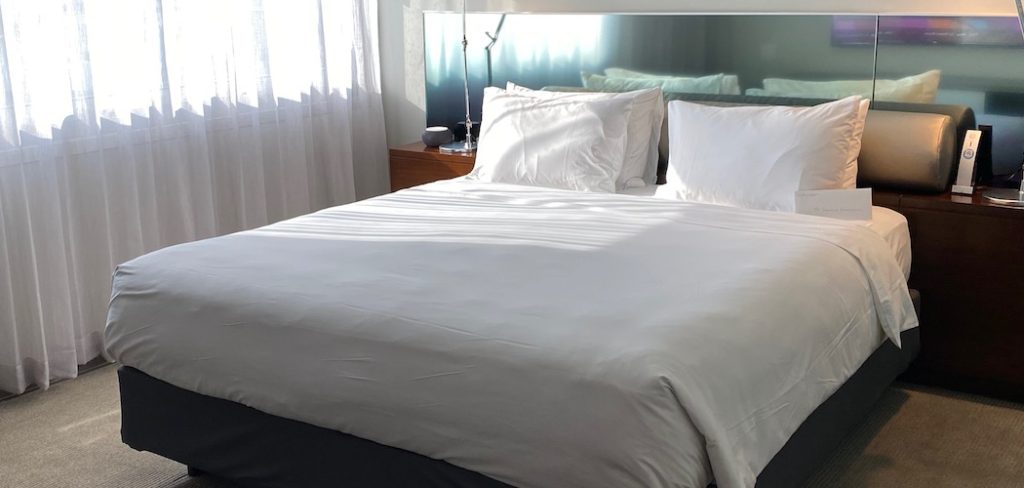
Tools and Materials You’ll Need
- Vacuum cleaner with attachments
- Non-slip mattress pad or rubber matting
- Velcro strips (heavy-duty, adhesive-backed)
- Duct tape or carpet tape (optional)
- Mattress straps or suspenders (optional)
- Bed skirt (optional)
- Screwdriver or wrench (if tightening bed frame)
- Measuring tape
8 Simple Step-by-step Guidelines on How to Stop Mattress From Sliding Off Box Spring
Step 1: Prepare the Bed and Assess the Situation
Before you can implement any solutions, the first crucial step is to prepare your bed and thoroughly assess the potential causes of the sliding. Start by completely stripping the bed of all linens, including sheets, blankets, comforters, and pillows. Next, carefully lift the mattress off the box spring and lean it securely against a nearby wall. This gives you a clear and unobstructed view of the box spring’s surface, the bed frame, and the underside of your mattress, allowing you to inspect them for any issues that might be contributing to the problem.
With the area cleared, take a moment to examine every component. Check the surface of the box spring for excessive smoothness or a worn-out cover that might lack grip. Look at the bed frame itself to ensure it is level and that all bolts and screws are tight. An uneven or wobbly frame can easily cause the mattress to shift. Finally, inspect the bottom of your mattress. Some modern mattresses have slick, silky covers that offer very little friction. Identifying the root cause will help you choose the most effective solution from the steps that follow.

Step 2: Clean Both Surfaces Thoroughly
With the mattress removed, your next step is to create a clean foundation for whatever grip-enhancing solution you choose. Over time, dust, dirt, pet hair, and other debris accumulate on the surface of the box spring and the underside of the mattress. This layer of particles acts like tiny ball bearings, reducing friction and making it much easier for the mattress to slide around. A thorough cleaning is essential to ensure that any adhesive or non-slip material you apply will make direct, effective contact with the surfaces.
Using a vacuum cleaner with an upholstery or brush attachment, go over the entire top surface of the box spring. Pay special attention to the seams and any tufted areas where dust tends to gather. Once the box spring is clean, turn your attention to the bottom of the mattress and vacuum it with the same care. If you notice any stubborn spots or stains, you can spot-clean them with a mild detergent and water, but make sure the area is completely dry before proceeding. A clean surface is fundamental for a lasting solution.
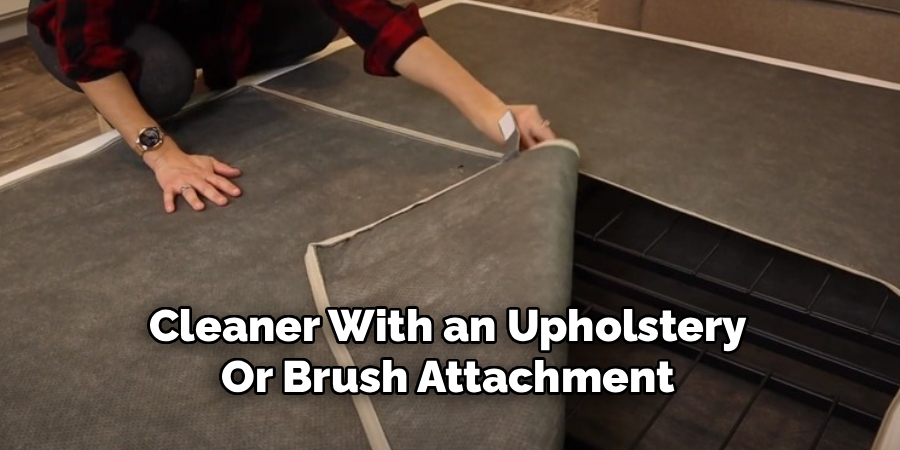
Step 3: Add a Non-Slip Pad or Mat
One of the most effective and simplest methods to prevent a mattress from sliding is to introduce a layer of friction between it and the box spring. A non-slip pad, specifically designed for this purpose, is an excellent choice. These pads are made from materials like natural rubber or PVC foam that have a high coefficient of friction. They work by creating a gripping surface that holds the mattress firmly in place, even when you toss and turn during the night. You can find these pads in standard mattress sizes, making installation incredibly easy.
To install one, simply lay the non-slip pad directly on top of your cleaned box spring, ensuring it is centered and lies flat without any wrinkles or folds. Then, carefully place your mattress back on top of the pad. If you can’t find a dedicated mattress pad, a thin rubber rug pad, the kind used to keep area rugs from slipping on hardwood floors, works just as well. You may need to trim it to the correct size with a pair of scissors, but the principle is the same. This single addition can often solve the problem entirely.
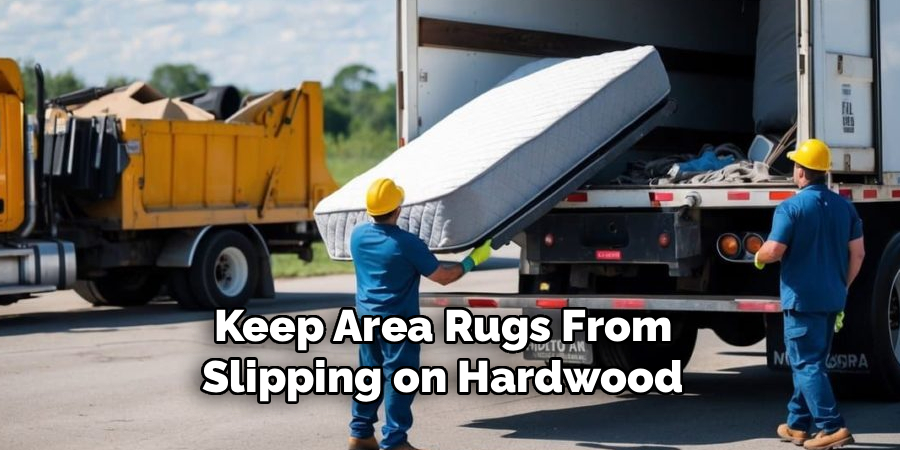
Step 4: Utilize Velcro Strips for a Secure Hold
If you’re looking for a more direct and semi-permanent solution, heavy-duty Velcro strips offer a powerful way to lock your mattress into position. Velcro works by fastening two corresponding strips together, and its industrial-strength variants are more than capable of holding the weight of a mattress against movement. This method is particularly useful for very slick mattresses or for beds that experience a lot of movement, such as those used by children or restless sleepers. The key is to use wide, adhesive-backed strips for maximum surface area and holding power.
To apply this solution, first measure and cut several long strips of Velcro. You will need both the hook side and the loop side. Peel the backing off the hook (the rougher side) strips and press them firmly onto the box spring, placing one near each corner and a few along the sides for good measure. Then, peel the backing off the corresponding loop (the softer side) strips and attach them to the underside of the mattress in the exact locations that will align with the strips on the box spring. Carefully lower the mattress onto the box spring, pressing down firmly to engage the Velcro.
Step 5: Try Double-Sided Carpet Tape
For a quick and budget-friendly fix, double-sided carpet tape can be a surprisingly effective tool. This type of tape is designed to hold heavy carpets in place against the floor, so it has a strong adhesive that can create a significant bond between your mattress and box spring. While it may not be as durable as Velcro or as comprehensive as a non-slip mat in the long run, it serves as an excellent temporary solution or a test to see if better adhesion is all you need. It is particularly effective for lightweight mattresses.
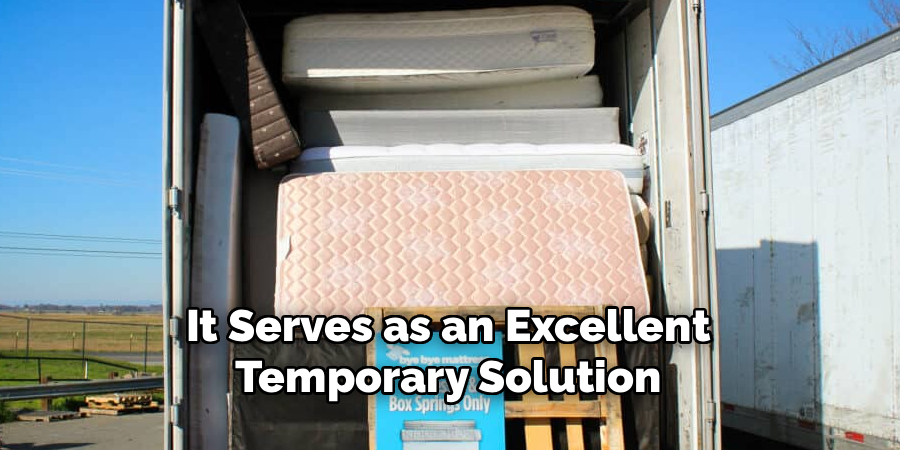
To use carpet tape, apply several long strips directly to the top of your box spring after you have cleaned it. Focus on the perimeter and add a few strips in an “X” pattern across the middle for extra security. Be generous with the tape to distribute the holding force evenly. Once the tape is in place, do not peel off the top protective layer yet. Carefully lower the mattress back onto the box spring and position it exactly where you want it. Then, working one section at a time, lift a corner or side of the mattress, peel the backing off the tape, and press the mattress firmly down onto the exposed adhesive.
Step 6: Use Mattress Straps or Suspenders
If adding friction isn’t enough, you can physically secure the mattress to the box spring using specialized straps. Often marketed as “mattress suspenders” or bed straps, these products are designed to wrap around both the mattress and the box spring, cinching them together. This method makes it physically impossible for the mattress to slide independently from its base. It is a robust solution that works well for thick, heavy mattresses or adjustable beds where the angle of the base changes, increasing the likelihood of sliding.
These strap systems typically come with large, durable clips and adjustable elastic bands. To install them, you’ll run the straps underneath the box spring and up the sides of the mattress. Some designs involve clipping the strap to the bottom edge of the mattress on one side, running it under the box spring, and attaching it to the other side. Others create a loop that encompasses both pieces. Follow the manufacturer’s instructions carefully and tighten the straps until they are taut but not so tight that they damage the edges of your mattress. This mechanical connection provides an unmatched level of security.
Step 7: Check and Secure the Bed Frame
Sometimes, the problem isn’t with the mattress or the box spring but with the bed frame itself. A frame that is unstable, wobbly, or not perfectly level can cause the entire bed assembly to shift, leading to the mattress sliding off the box spring. Small movements in the frame from getting in and out of bed can translate into larger shifts of the mattress over time. Therefore, a thorough inspection and tightening of your bed frame is a critical diagnostic and corrective step that should not be overlooked.
Using a screwdriver or wrench, go around the entire bed frame and check every single bolt, screw, and connection point. Tighten anything that has come loose. If your frame has a center support leg, ensure it is firmly on the floor and adjusted to the correct height. Use a level to check if the frame is sitting evenly. If it’s not, you may need to place shims under the legs to level it out. Ensuring the foundation is solid and stable eliminates a major potential cause of a sliding mattress and improves the overall structural integrity of your bed.
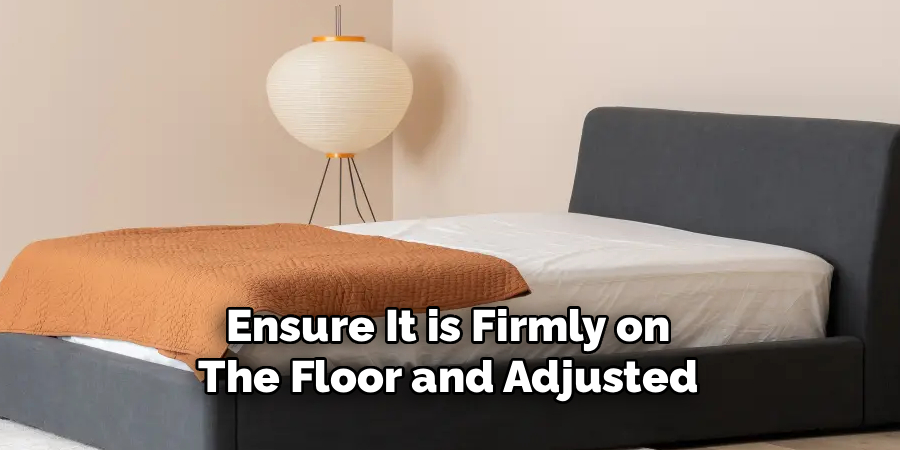
Step 8: Use a Tight-Fitting Bed Skirt
A bed skirt, or dust ruffle, can do more than just add a decorative touch and hide the box spring; it can also help keep your mattress in place. When a bed skirt is tucked tightly between the mattress and the box spring, it can act as a subtle but effective barrier. The fabric adds a layer of friction and, more importantly, its presence along the edges can help contain the mattress and prevent it from beginning to slide. This is particularly effective when combined with another method, like a non-slip pad.
For this to work, you need a bed skirt that fits your box spring snugly. After placing the bed skirt over the box spring, ensure the fabric is smooth and evenly distributed. Then, when you place the mattress back on top, the weight of the mattress will pin the skirt’s platform section down. The fabric along the edges will then create a slight ridge and some extra friction, helping to hold the mattress within the confines of the box spring. This simple addition can be the finishing touch that secures your setup.
Following these steps on how to stop mattress from sliding off box spring can save you from the annoyance of constantly having to re-position your mattress.
Regular Maintenance Check
Once you have successfully stopped your mattress from sliding, regular maintenance will ensure the problem doesn’t return. Every few months, or whenever you rotate your mattress, take the opportunity to perform a quick check.
Lift the mattress and inspect your chosen solution. If you used a non-slip pad, make sure it is still clean and hasn’t bunched up. For Velcro or tape, confirm that the adhesive is still holding strong. Also, re-check your bed frame to tighten any bolts that may have loosened over time. A little bit of proactive care will keep your bed secure and comfortable for years to come.
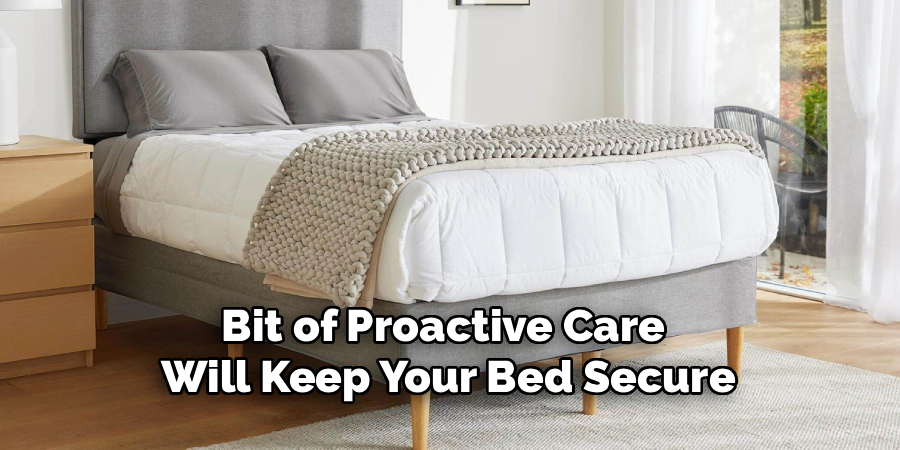
Common Mistakes to Avoid
- Ignoring the problem can lead to poor sleep and damage to your bed.
- Using solutions that are too weak, like thin shelf liners, which won’t hold the mattress’s weight.
- Forgetting to clean the surfaces prevents any adhesive or pad from working effectively.
- Over-tightening straps wan create indentations and damage the sides of your mattress.
- Failing to check if the bed frame itself is level and stable, a common underlying cause.
Frequently Asked Questions
Q1: Why Does My Mattress Keep Sliding Off the Box Spring?
A1: There are several common reasons for a sliding mattress. Often, the issue is a lack of friction between the two surfaces. Many modern mattresses, especially memory foam or hybrid models, have soft, slick fabric covers on the bottom that don’t grip the box spring’s surface. Similarly, the box spring cover itself may be made of a smooth material. Other factors can include a bed frame that is not perfectly level or has become wobbly, or a mismatch in size where the mattress is slightly smaller than the box spring, giving it room to move.
Q2: Can a Headboard and Footboard Prevent a Mattress From Sliding?
A2: Yes, a bed frame that includes both a headboard and a footboard can be very effective at preventing a mattress from sliding, particularly in one direction. The headboard and footboard act as physical barriers at the top and bottom of the bed, stopping longitudinal movement. However, they do not prevent the mattress from sliding side-to-side. For this reason, even with a headboard and footboard, you may still need to implement one of the friction-based solutions, like a non-slip pad, to fully secure your mattress and stop lateral shifting.
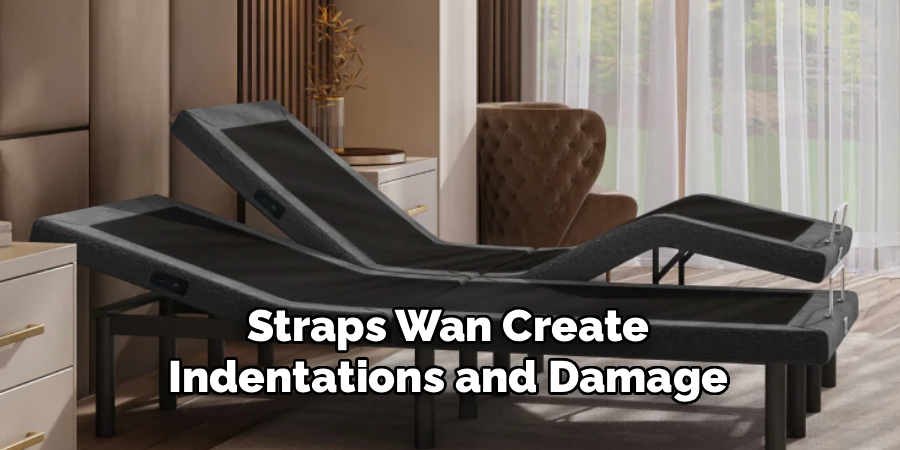
Q3: Will Any Type of Rug Pad Work to Stop a Mattress From Sliding?
A3: While many types of rug pads can help, not all are created equal for this task. The best options are rug pads made from natural rubber or dense PVC foam, as they offer the most grip. Avoid thin, mesh-like pads or those made from felt, as they provide less friction and may not be effective under the weight of a mattress and sleeper. It’s best to choose a pad with a solid surface or a very dense waffle pattern. You can also purchase pads specifically designed as mattress grippers, which are guaranteed to be made from the right materials.
Q4: How Often Should I Rotate My Mattress if It’s Secured With Velcro?
A4: Securing your mattress with Velcro does add an extra step to the rotation process, but it shouldn’t stop you from doing it. Most mattress manufacturers recommend rotating your mattress 180 degrees every three to six months to ensure it wears evenly. When you have Velcro strips, you will need to carefully detach the mattress from the box spring. If you placed Velcro symmetrically (e.g., at all four corners), you can simply rotate the mattress and press it back down. If your placement was asymmetrical, you might need to reposition the Velcro strips on the mattress underside to match the ones on the box spring after rotation.
Conclusion
A mattress that refuses to stay put can be a persistent source of frustration, but it’s a problem with many reliable solutions. From simple additions like a non-slip pad or double-sided tape to more robust methods like Velcro strips or mattress suspenders, there is an approach that will fit your needs and budget.
By taking the time to prepare your surfaces, assess the root cause, and implement one of these proven strategies, you can firmly anchor your mattress to its box spring. A stable, secure bed is fundamental to a good night’s sleep, and ensuring your mattress stays in place is a simple yet powerful step toward improving your overall sleep quality and comfort. Thanks for reading this article on how to stop mattress from sliding off box spring.
About
Construct Fixes is a distinguished figure in the world of Diy design, with a decade of expertise creating innovative and sustainable Diy solutions.
His professional focus lies in merging traditional craftsmanship with modern manufacturing techniques,
fostering designs that are both practical and environmentally conscious. As the author of diy,
constructfixes delves into the art and science of construction-making, inspiring artisans and industry professionals alike.
Education RMIT University
(Melbourne, Australia) Associate Degree in Design (Construct Fixes) Focus on sustainable design, industry-driven projects,
and practical craftsmanship. Gained hands-on experience with traditional and digital manufacturing tools, such as CAD and CNC software.
Nottingham Trent University
(United Kingdom) Bachelor’s in constructfixes.com and Product Design (Honors) Specialized in product design with a focus on blending creativity with production
techniques. Participated in industry projects, working with companies like John Lewis and Vitsoe to gain real-world insights.
Publications and Impact
In diy, Construct Fixes his insights on indoor design processes, materials, and strategies for efficient production.
His writing bridges the gap between artisan knowledge and modern industry needs, making it a must-read for both budding designers and seasoned professionals.
